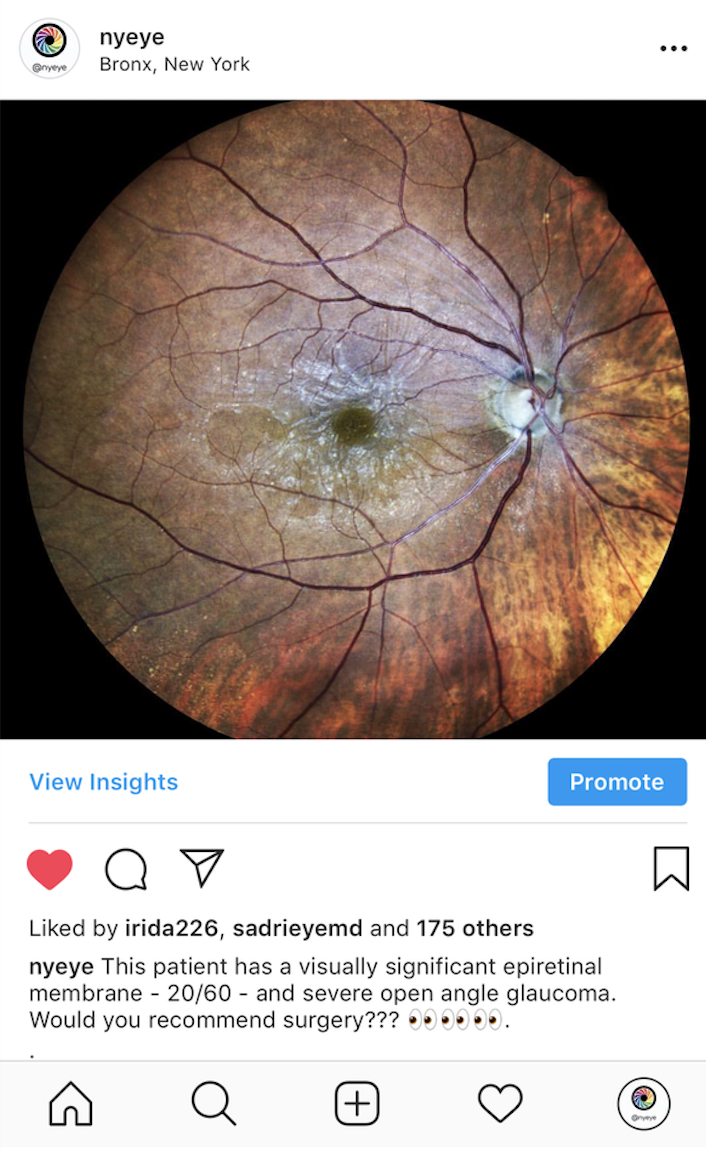Instagram is the second most popular social media network in the world, only behind its parent company Facebook. With its ease of use and simplicity, it is easy to see why so many people have fallen in love with this photo-sharing platform. Serving more than 1 billion users worldwide and 191 million daily active users, Instagram is a great way for physicians to present themselves, their practices, and the interesting cases they encounter.
A GLOBAL DISCUSSION
Admittedly, I only began using Instagram a few months ago as a way of presenting myself professionally. After searching around the platform and looking at other doctors’ accounts, I finally settled on how I wanted to use it. I began using social media, more specifically Instagram, as a venue to post photos of interesting and unique cases in my practice. The more cases I posted, the more I noticed my audience asking questions or wanting to know more about the content. In turn, I have found this to be a fun and engaging way of educating my peers and a great way to connect with doctors, residents, medical students, and occasionally even patients.
One aspect I have found surprising is that most social media audiences for ophthalmology consist of users from outside the United States. My international Instagram followers offer unique perspectives on challenging cases, and the global discussions that take place in the comments section are often engaging and involve treatment options not always available in the United States. This type of dialogue usually takes place in a grand rounds setting in academic programs and circles. Although the grand rounds experience cannot truly be replicated outside of those scenarios, I have found that Instagram offers some elements of this educational forum.
INSTAGRAM HOW-TO
Instagram for ophthalmology is quite simple: You post a case photo and then engage with your audience. There are several ways to go about engaging with others, and every user does it a bit differently. My favorite method is writing a caption describing the diagnosis and asking my followers what their suggested treatment would be (Figure 1).

Figure 1 | An effective way to engage with your Instagram audience is to post a clinical photo, note the diagnosis, and inquire about the proposed course of action.
In some circles, the use of hashtags can be considered taboo. For professional purposes, they can greatly expand your audience beyond your current followers. Hashtags draw in users who are working on similar cases or in similar fields. Therefore, I always include #ophthalmology and #ophthalmologist, and I continue to hashtag more specifically depending on the content of the case. For example: “Here’s a case of dense cortical #cataracts with #posteriorsynechiae, well-controlled #glaucoma, history of bilateral #retinaldetachment repair with light perception vision in both #eyes. Would you operate?”
Each Instagram post harbors a forum for lengthy discussions, be it through the sharing of different opinions, requests for more information, etc. I consistently see physicians, residents, and medical students on opposite ends of the world engaging with each other and discussing cases on my Instagram feed.
Through hashtags, ophthalmologists can easily attract all types of specialists. I am a glaucoma specialist, but many of the cases I post involve cataracts or a combination of the two conditions. With my posts, I attract glaucoma, retina, cornea, and oculoplastic specialists alike, often through hashtagging. Many times, these individuals are using the same hashtags for their cases, or they are looking for cases that include those hashtags. This is a great way for physicians to access education outside their subspecialty, giving them confidence to tend to these cases as they come their way.
SUMMARY
Instagram for ophthalmology is the new grand rounds. Presenting a medical problem and treatment on Instagram is a way for medicine to keep up with the changing times of increased social media usage. Some users who post this this type of interactive content include: @nyeye, @brooklyneyecenter, @cityeyemd, and @glaucomadoctor.
As you set out on these new grand rounds, remember to keep your patients’ data private at all times, as sharing private health information is a major HIPAA violation. Always ensure that there are no patient identifiers in your posts. Last, don’t pigeonhole yourself early on with interesting photos that you can only produce once in a while. Posting frequently is key to keeping your audience engaged and active. If you don’t post often or post similar cases repeatedly, your followers will notice and your audience will dwindle.



